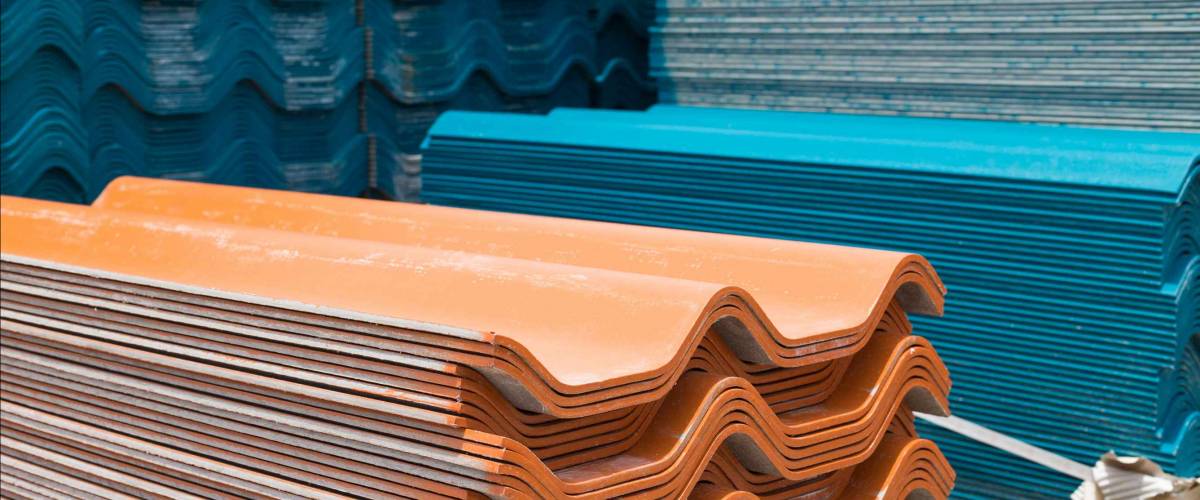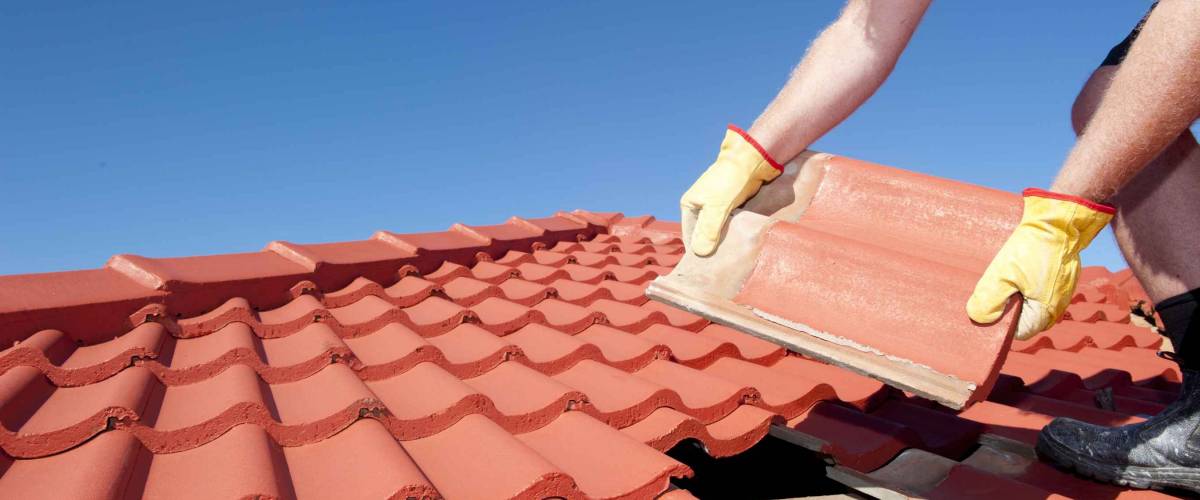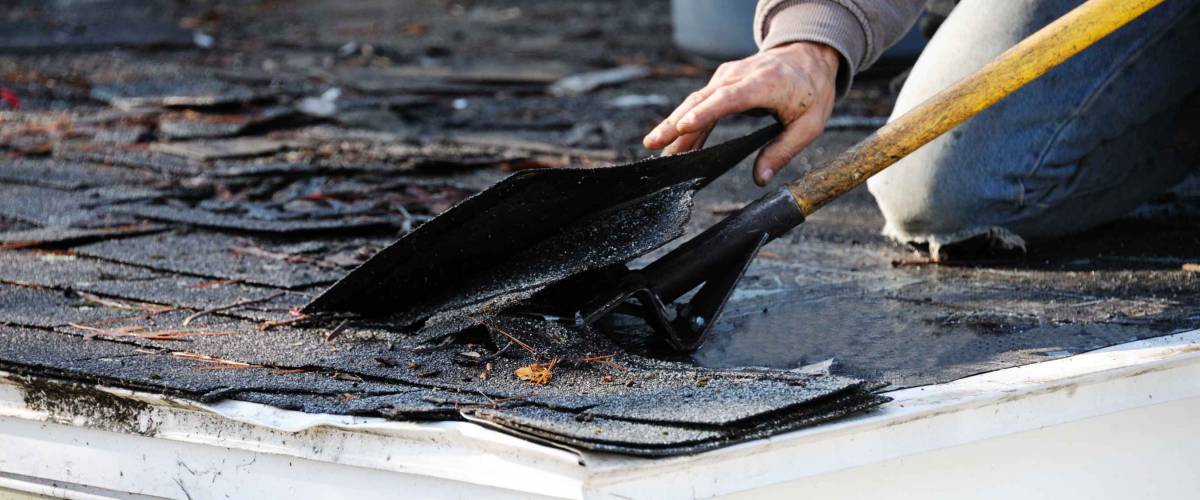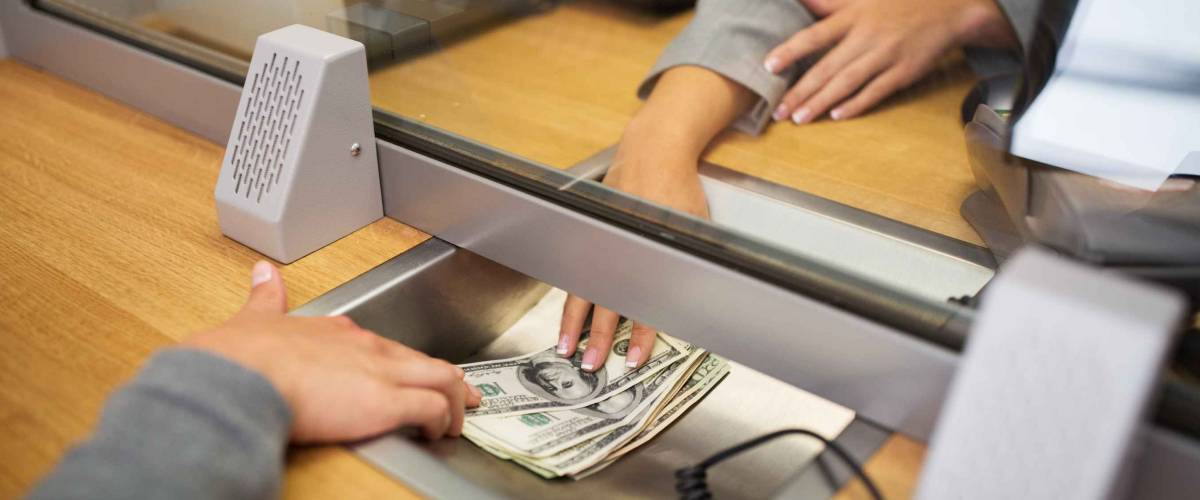A roof isn't cheap. Let's take a look at what it's going to cost you.
When is it time to replace?

If your roof leaks, it obviously needs replacing.
A roof can be replaced for several reasons. Maybe for a simple aesthetic upgrade, or if you want to try making your home more energy efficient.
But often it will be very obvious that it's time for a new roof — like if your current roof leaks every time it rains.
Variables such as sun and rain exposure, the age of the existing roof when you purchased the house and the energy efficiency of the roof can force you to replace your roof sooner rather than later.
A flat roof may have a short lifespan: perhaps just 10 years. That's because water, leaves and other debris tend to accumulate on a flat roof and cause damage. Other styles of roof can last decades longer.
As for the roofing materials, asphalt shingles on a pointed roof may last 30 or more years, while a metal, tile or slate roof may endure for 50 years or more.
Stop overpaying for home insurance
Home insurance is an essential expense – one that can often be pricey. You can lower your monthly recurring expenses by finding a more economical alternative for home insurance.
SmartFinancial can help you do just that. SmartFinancial’s online marketplace of vetted home insurance providers allows you to quickly shop around for rates from the country’s top insurance companies, and ensure you’re paying the lowest price possible for your home insurance.
Explore better ratesWhat roof features make a roof replacement more expensive?

One of the first things your contractor will consider is the roof’s accessibility: How many stories is your home? Are there nearby power lines or trees they’ll have to dodge? All these factors will increase the difficulty of the project, which adds to its expense.
The size of the roof will obviously impact cost, because more material will be needed to cover the space. Chimneys and skylights increase the price because of the special work and materials needed to install around them.
As for the slope, the steeper the roof, the higher the costs. That's because it becomes more dangerous for roofers to do their job, and they may require safety equipment.
Finally, you’ll have to obtain building permits. That will always add to your expenses, especially if you have a more substantial project that requires a few permits.
Your quote should factor in the cost of shingles, supplies, protective elements, removal of waste and labor. In general, you can expect your materials to account for about 40% of the expense while labor will eat up the other 60%.
How much would replacing a shingle roof cost?

Removing an existing roof can cost up to $5 per square foot and can total $1,500 or more, according to HomeAdvisor.com, a digital marketplace for homeowners.
If roofers uncover serious water damage or rot, removal can be much more expensive — to the tune of an extra $1,000 to $10,000.
But on average, removing and replacing a shingle roof costs between $5,587 and $11,687.
Shingles are an extremely popular material for roofing in the U.S. And they’re not all made of asphalt: Unless your roof is composed of a single piece of material, it’s included in the “shingle” category.
Some other materials shingles can be made of are:
- Clay.
- Slate.
- Wood.
- Metal.
When you’re picking a shingle style, the decision comes down to more than just personal taste. You’ll also want to factor in your budget for both installation and maintenance — each material has its own care requirements.
You may find it helpful to research the various materials before picking one to determine which fits your maintenance and longevity needs. Your contractor can also be helpful here, with insights on what works best in your climate.
Depending on the weather in your area, you may want to invest in impact-resident products, which can:
- Provide deck protection.
- Defend against leaks.
- Improve your home’s energy efficiency.
- Decrease your risk of damage during inclement weather.
HomeAdvisor does offer a shingle-type guide that includes some more thorough details to help you land on the right material for your home.
Stop overpaying for home insurance
Home insurance is an essential expense – one that can often be pricey. You can lower your monthly recurring expenses by finding a more economical alternative for home insurance.
SmartFinancial can help you do just that. SmartFinancial’s online marketplace of vetted home insurance providers allows you to quickly shop around for rates from the country’s top insurance companies, and ensure you’re paying the lowest price possible for your home insurance.
Explore better ratesHow much do roofing materials cost?

Keep in mind, roofers measure by roofing squares rather than standard square footage. One roofing square is equivalent to about 100 square feet.
Depending on what you choose, your materials alone can cost between $100 to $1,000 per roofing square. HomeAdvisor (using U.S. census data) estimates the average roof size is 17 squares, which means roofing materials might run you $2,500 to $25,000.
Based on that 17-square figure, let’s go over how much various types of materials should cost:
- 3-tab shingles (asphalt): $2,500
- Galvanized steel: $3,000
- Stainless steel: $14,000
- Slate/high-end stone: $20,000
- Copper: $25,000 (and up)
As you can see, some materials are significantly more expensive. But while slate and high-end stone will cost you upfront, it also has a very long lifespan. A new slate roof could last you (and future generations) as long as 125 to 200 years.
Including labor, asphalt shingle installation can cost between $5,700 and $12,000. Metal can cost between $5,300 and $15,000. The price of slate or tile can go from $5,700 all the way to $24,000.
And if you want your roof to stand out in your neighborhood, be prepared to pay a serious premium. A roof made of luxury materials like copper or exotic tiles can cost anywhere from $25,000 to $50,000.
How much will it cost to replace a roof using different materials from the old one?
Completely redoing your roof with different materials can be a little more expensive than the typical project. Generally, you should expect to pay between $7,000 to $12,000. But some roofs may cost even more than that.
If you’re hoping to replace a lighter product like asphalt with something on the heavier side (slate or clay tiles), your roofer will have to confirm whether your house’s framing can support it first.
This will generally involve the added cost of an inspection. If your roofer finds your support elements need to be strengthened, that could involve some truss repairs and truss reinforcement.
How much does labor cost for roof replacement projects?

According to HomeAdvisor, labor for roofing projects generally ranges from $150 to $300 per roofing square. In square feet, that translates to $1.50 to $3 per square foot.
Do you need to hire a roofer?
You don’t necessarily need to hire a professional roofer to replace your roof. But it’s a huge job that can be technical at times and you can easily run into some unexpected complications.
According to HomeAdvisor, some common issues you may encounter alone up on your roof include:
- Damaged timber in the framing and deck.
- Delays in new product delivery (especially after you’ve already stripped the roof surface).
- Choosing the wrong materials for your slope, frame or environment.
- Safety concerns, especially with roofs with a high slope or nearby power lines or trees.
If you’re very handy or familiar with home improvement, the above concerns may not faze you. But if they give you any pause at all, you should consider looping in a professional contractor.
Roofer contractors will be able to guide you towards the right product for your home, keep the project on schedule, spot issues before they become problems — all while following the correct safety regulations.
Are you set on doing it yourself? You may find HomeAdvisor’s DIY roofing tips helpful here.
Average roof replacement costs

Breaking down your expenses, there are essentially three components you’ll be paying for with your roof replacement project:
- Materials. This would include both your shingles and all the supplies your contractor will need to use to lay, seal and protect them.
- Installation. As we’ve mentioned, this is your most significant cost: labor generally accounts for about 60% of your total expenditures here.
- Waste. After your old roofing materials have been removed, they’ll need to be disposed of or recycled.
Houses
As we mentioned at the beginning of this story, you’ll pay an average of $8,575 to have your home’s roof replaced.
Included in that expense is the work of removing existing shingles, making spot repairs to the underlying shingles and installing new ones.
And you’ll have to keep in mind that what you’ll pay depends mostly on the complexity and scope of the project, as well as local labor expenses and the materials you choose.
Garages
If it’s just your garage roof that needs replacing, you’ll find your project is much more affordable.
HomeAdvisor reports this should run you somewhere between $1,000 and $2,000. Your total expense, as with your home’s roof, will rely on the roof’s size as well as the pitch and material required for the project.
If you’re already bringing in a contractor to work on your garage, it’s a great time to improve the ventilation and insulation in the structure if those are failing as well.
Townhomes
Replacing the roof on a townhouse costs somewhere between $2,000 to $5,000. But be prepared for this to be a bit more complicated a process.
HomeAdvisor lays out the following price-impacting factors of townhouses.
- Homeowner Associations (HOAs) often regulate these projects, which can limit your options for materials and color.
- Your home may be connected to neighboring homes.
- Even if the square footage is the same or less than a detached home, three-story buildings cost more in labor because they’re harder to access and require more safety equipment.
- Removing the previous roofing materials can be more expensive.
Additionally, your HOA may even be on the hook for the cost, which could mean you’ll have to follow its timeline, regulations and bylaws.
Does location affect roof replacement cost?

Absolutely. In certain cities and states, the average roof-replacement cost differs substantially from the national average.
You’ll find the average cost of replacing a roof in Florida is much higher ($8,000 to $16,500) compared to prices in Maryland ($4,500 to $9,500).
The disparity is due in part to regional labor rates.
No matter what ZIP code it’s in, your home’s specific location will also add to the cost. If you live on the edge of a cliff or in a less accessible area, expect to pay more as well.
How to cut your roof replacement costs

There are a few things you can do to ensure you fall on the lower end of the scale of average costs to replace your roof.
Shop around
With any home improvement project, it always pays to shop around for a few different quotes from a handful of contractors.
It’s also important to check references and referrals. There’s no shortage of contractors out there who take advantage of homeowners or simply produce subpar work.
(Just think of all the HGTV shows that have been created around the premise of righting these contractor wrongs.)
Don’t be shy to ask for references or check whether they’re registered with your local Better Business Bureau.
You can also check with your state consumer protection agency to ensure your contractor is properly licensed and insured.
Understand how pricing works
Now that you know all about roofing squares and the varying costs of roofing materials, you should feel confident about asking your roofing contractor for more information or clarification on the job ahead.
There’s nothing wrong with asking your contractor to provide you with a more detailed breakdown of how the expenses add up.
If you find it’s the material that accounts for your high cost, you may consider opting for a less expensive option. Work with your contractor to find some more budget-friendly options.
But this is something you’ll want to do well before work begins on your roof. Don’t wait until all the materials have been ordered to approach your roofer about this.
Time your project for the right season
Roofing jobs tend to dry up in the late winter and spring. If the weather in your area of the country will permit it, consider planning your roof replacement for then.
You may even be able to secure an off-season discount on your project.
Consider some DIY

If you’re able, you can save a little money by pitching in. One way to do so would be to remove the old roofing materials before your contractor comes in to install the new roof.
But be sure to run this by your contractor first. If it’s an especially complicated undertaking, the risk and effort involved may not be worth the savings you’ll see.
And be aware that doing this part yourself may leave you on the hook for disposing of materials yourself. Don’t bite off more than you can reasonably chew here.
How to pay for your home repair

While we understand the cost of repairing your roof can be a little jarring, it’s an essential part of your home’s structure.
When the time comes to replace it, the average household doesn’t have several thousands of dollars sitting around to pay for a new roof.
So where can you find the funds?
You have a few different options you can explore, which cater to different borrowing needs.
Home equity loan
Also known as a “second mortgage,” a home equity loan is a loan you place against the equity you’ve built up in your home. That’s the difference between your home’s fair market value and the outstanding balance you owe on your mortgage.
You’ll get one lump sum payment, which you’ll be expected to pay back over time at a fixed interest rate.
HELOCs

HELOCs (or a home equity line of credit) allow you to borrow money against the equity in your home, similar to home equity loans.
However, HELOCs are revolving loans, meaning they’re structured more like a credit card. Instead of the single lump sum that you get with a home equity loan, you’re given a “draw period,” where you can withdraw any amount within your limit at any time. You’re only required to pay the interest for what you take out during the draw period.
During that time, you can draw and repay and draw again as you please. But once the period has ended, you won’t be allowed to take out more money.
Personal loans
Unsecured personal loans allow you to borrow a specified amount of money at a fixed interest rate on a fixed term without offering collateral.
Most personal loans usually come with a higher interest rate than home equity loans or HELOCs because lenders are taking a bigger risk without collateral.
But if you can afford that expense or you have a high enough credit score to qualify for lower interest rates, it’s certainly less risky for you as a borrower.
Sponsored
Unexpected vet bills don’t have to break the bank
Life with pets is unpredictable, but there are ways to prepare for the unexpected.
Embrace Pet Insurance offers coverage for treatment of accidents, illnesses, prescriptions drugs, emergency care and more.
Plus, their optional wellness plan covers things like routine vet trips, grooming and training costs, if you want to give your pet the all-star treatment while you protect your bank account.







